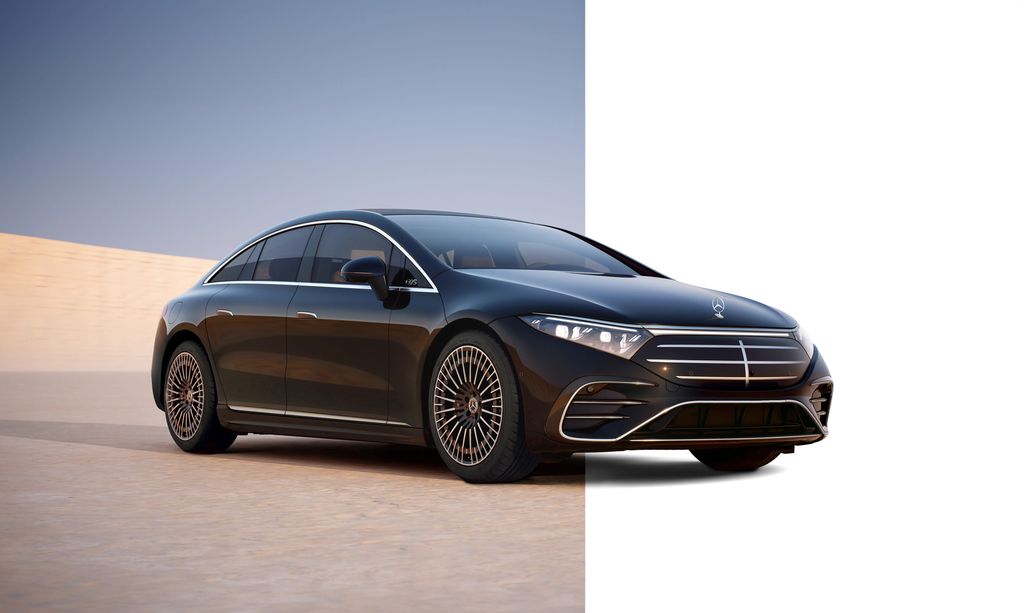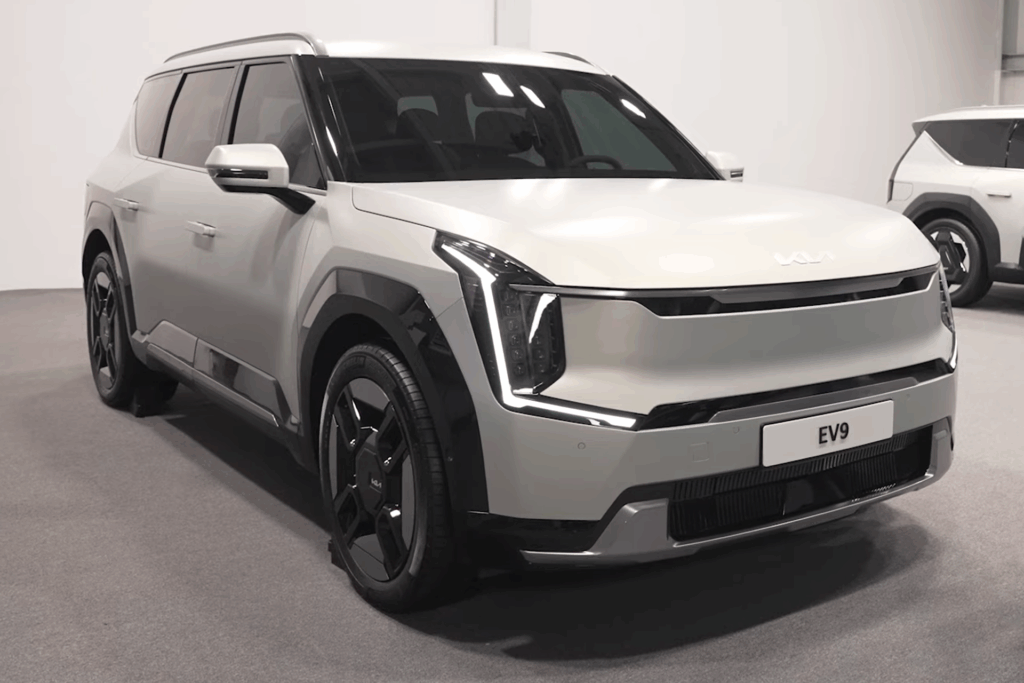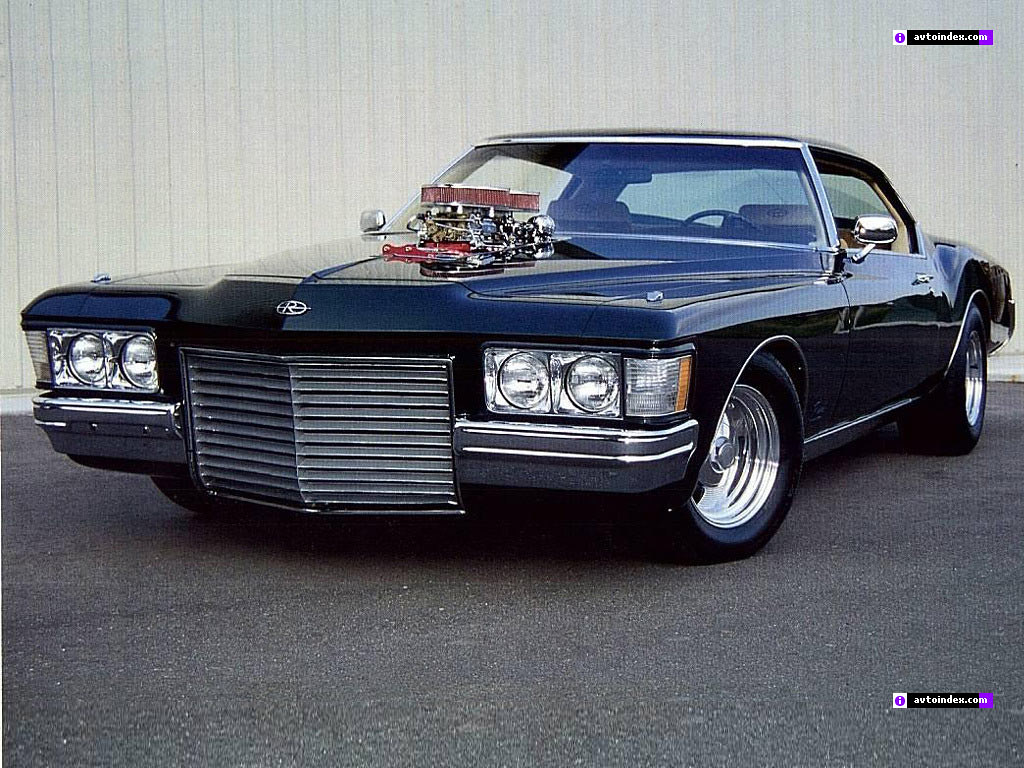
The roaring heart of American automotive history beats strongest in the muscle car era, a period defined by an audacious pursuit of raw power and unbridled performance. These magnificent machines weren’t just vehicles; they were four-wheeled statements, embodying an uncompromising appetite for speed that captured the imagination of a generation. Yet, within this golden age of horsepower, a fascinating paradox emerged: some muscle cars were engineered with such forward-thinking brilliance and staggering power that they inadvertently became too advanced, or perhaps too untamed, for the roads and drivers of their time.
Imagine an era where horsepower wars reached a fever pitch, fueled by intense automotive rivalry and relatively lax safety regulations. Manufacturers unleashed mechanical beasts that often pushed, and sometimes spectacularly overstepped, the boundaries of what was considered prudent for street use. These cars delivered power-to-weight ratios that could rival exotic sports cars of their day, but critically, they lacked the sophisticated handling capabilities, advanced tire technology, or electronic stability control systems we now take for granted to harness such immense performance safely.
It’s a compelling narrative of innovation meeting an unprepared world. Many of these pioneering models, equipped with groundbreaking technologies and radical designs, were either misunderstood, undervalued, or simply too much to handle when they first hit the market. They challenged the very notion of what belonged on public streets, leaving a legacy of both awe-inspiring engineering achievements and, at times, dangerously unpredictable driving dynamics. Join us as we delve into the stories of these extraordinary muscle cars, machines that were, for better or worse, just too advanced for their own good.

1. **1969 Dodge Charger Daytona/Plymouth Superbird**The 1969 Dodge Charger Daytona and its 1970 Plymouth Superbird sibling represent the pinnacle of outrageous muscle car design, crafted almost exclusively for NASCAR domination. These “aero warriors” featured cartoonishly extreme aerodynamic modifications like an 18-inch nose cone and a towering 23-inch rear wing. These radical changes transformed the standard Charger/Road Runner profiles into something otherworldly, showcasing an unprecedented focus on high-speed efficiency over street practicality.
Underneath this dramatic exterior lay a beastly powertrain. The legendary 426 Hemi V8, officially rated at 425 horsepower, was widely known to deliver well over 500 horsepower in reality, a deliberate understatement. Paired with a four-speed manual, these winged marvels could hit 60 mph in under 5.5 seconds and approached 200 mph, blistering performance that set new benchmarks for the era. This untamed power made them truly formidable, yet incredibly challenging on public roads.
What made these cars problematic for daily driving extended beyond just raw power. Their specialized aerodynamic features, ideal for race tracks, made routine tasks like parking nearly impossible and severely compromised visibility. Inadequate standard drum brakes and primitive bias-ply tires constantly struggled for traction under the engine’s massive torque. Contemporary road tests highlighted their skittish, unpredictable handling, often describing a propensity for the rear end to break loose without warning. These rare machines embody Detroit’s extreme pursuit of racing dominance over street practicality, challenging contemporary safety and drivability norms.
Car Model Information: 2019 Dodge Charger GT
Name: Dodge Charger Daytona
Caption: 1969 Dodge Charger Daytona
Manufacturer: Dodge
Production: 1969–1970,2006–2009,2013,2017–2023
Class: Muscle car
Layout: FR layout
Categories: 1960s cars, 1970s cars, 2000s cars, All articles needing additional references, All articles with unsourced statements
Summary: Dodge produced three separate models with the name Dodge Charger Daytona, all of which were modified Dodge Chargers. The name was taken from Daytona Beach, Florida, which was an early center for auto racing and still hosts the Daytona 500, NASCAR’s premier event. The original Dodge Charger Daytona was designed to beat the competition in NASCAR racing. It was the first NASCAR vehicle to reach 200 miles per hour, which was a major milestone at the time.
Get more information about: Dodge Charger Daytona
Buying a high-performing used car >>>
Brand: Dodge Model: Charger Daytona
Price: $14,990 Mileage: 116,956 mi.
Read more about: Revving Up History: Unearthing the Forgotten Engines That Forged American Muscle Legends
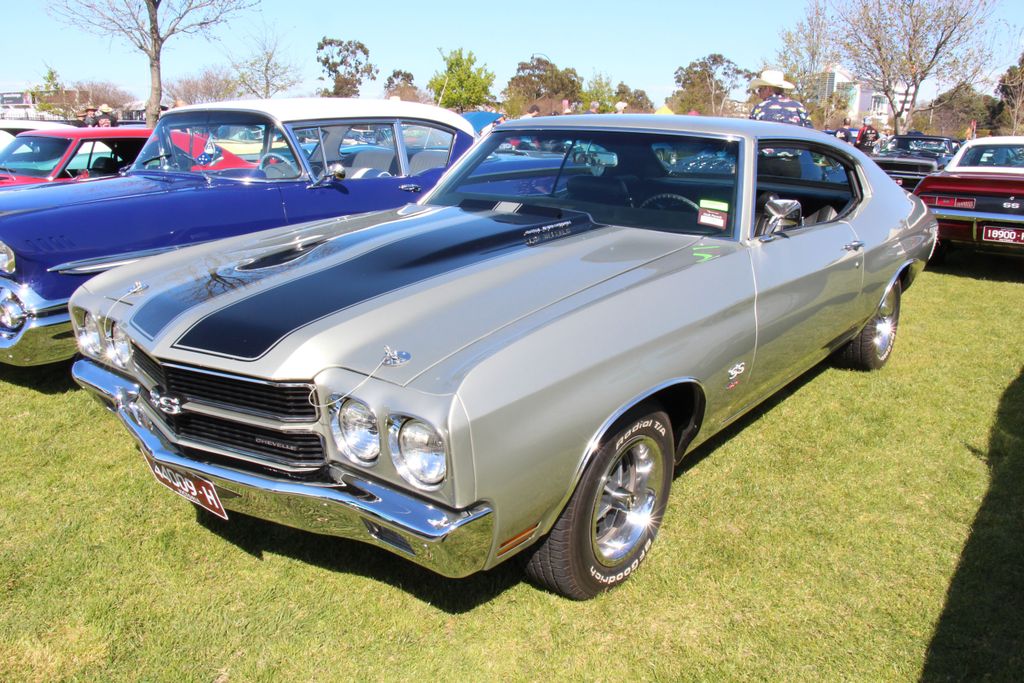
2. **1970 Chevrolet Chevelle SS 454 LS6**The 1970 Chevelle SS 454 with the LS6 engine option marks the high-water mark of General Motors’ contribution to the muscle car horsepower wars. Many enthusiasts still consider it the ultimate street fighter of its era, a potent blend of brute force and aggressive styling. Chevrolet unleashed what was arguably the most excessive weapon in their arsenal: a 454 cubic-inch big-block V8 engineered for pure, unadulterated performance.
This legendary Chevelle featured a high-lift, solid-lifter camshaft, an impressive 11.25:1 compression ratio, and a massive 780 CFM Holley four-barrel carburetor. Officially rated at 450 horsepower and 500 lb-ft of torque, its actual output was widely believed to exceed 500 horsepower, a deliberate underreporting to manage insurance rates. This staggering power, delivered through a relatively lightweight package, resulted in seismic performance: 0-60 mph in about 5.4 seconds and quarter-mile times in the low 13-second range at over 108 mph, remarkable figures on primitive bias-ply tires.
However, the LS6 Chevelle’s danger on public roads stemmed from its excessive power combined with rudimentary chassis technology and surprising accessibility. Unlike exotic high-performance cars, it was affordable and widely available, putting extraordinary power into many inexperienced hands. The suspension was inadequate for the LS6’s brutal power, leading to pronounced understeer or sudden, catastrophic oversteer. Standard drum brakes were drastically overmatched, and period road tests often advised it required “respect and considerable driving skill” to operate safely, underscoring its lethal potential.
Car Model Information: 1969 Chevrolet Chevelle SS
Name: Chevrolet Chevelle
Caption: 1970 Chevrolet Chevelle SS 396 Sport Coupe
Manufacturer: Chevrolet
Production: 1963–1977
ModelYears: 1964–1977
Class: Mid-size
Platform: GM A platform (RWD)
Layout: FR layout
Successor: Chevrolet Malibu
Categories: 1970s cars, All articles needing additional references, All articles that may contain original research, All articles with specifically marked weasel-worded phrases, All articles with unsourced statements
Summary: The Chevrolet Chevelle is a mid-sized automobile that was produced by the Chevrolet division of General Motors (GM) in three generations for the 1964 to 1977 model years. Part of the GM A-body platform, the Chevelle was one of Chevrolet’s most successful nameplates. Body styles included coupes, sedans, convertibles, and station wagons. The “Super Sport” versions were produced through the 1973 model year and Lagunas from 1973 through to 1976.
After a four-year absence, the El Camino was reintroduced as part of the new Chevelle lineup in 1964.
From 1964 to 1969, GM of Canada sold a modified version of the Chevelle that included a Pontiac-style grille, and a LeMans instrument panel, marketed as the Beaumont.
The Malibu was the top-of-the-line model to 1972, and completely replaced the Chevelle nameplate starting with the redesigned, and downsized 1978 model year.
Get more information about: Chevrolet Chevelle
Buying a high-performing used car >>>
Brand: Chevrolet Model: Chevelle
Price: $119,550 Mileage: 93 mi.
Read more about: The Road to Riches: 15 Classic Cars Skyrocketing in Value for Savvy Enthusiasts
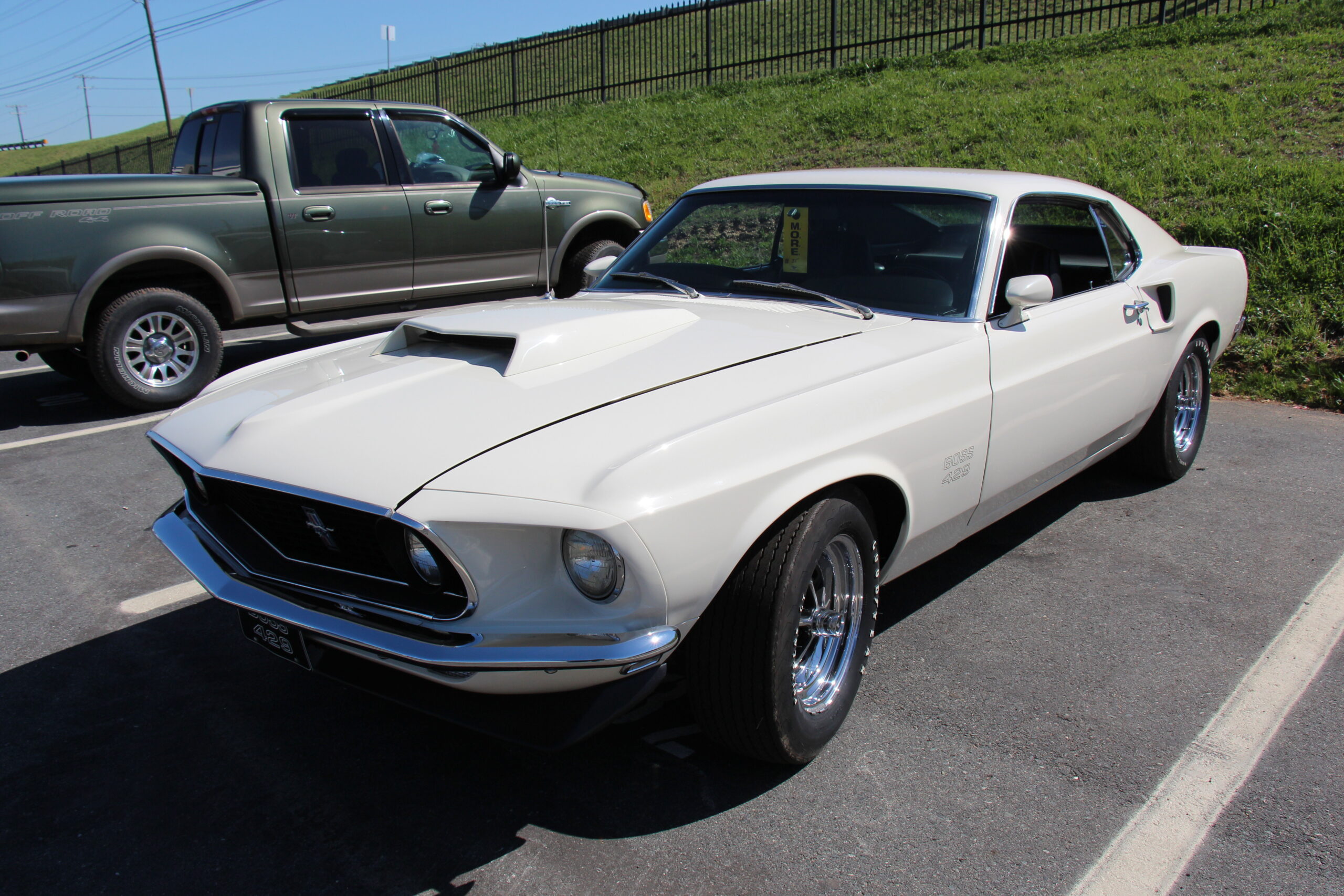
3. **1969 Ford Mustang Boss 429**The 1969 Ford Mustang Boss 429 stands as one of the most dangerously overpowered production cars of its time, purely created to homologate Ford’s massive new hemispherical combustion chamber engine for NASCAR. Enthusiasts called it the “Boss 9,” representing an engineering extreme: stuffing the largest, most powerful engine possible into a car never designed for such a behemoth. This pursuit of racing dominance severely compromised its street manners.
The Boss 429 engine was a true monster: a 429 cubic-inch V8 with aluminum heads featuring enormous hemispherical combustion chambers, forged pistons, and a 735 CFM Holley carburetor. Officially rated at 375 horsepower, its actual output was widely acknowledged to exceed 500 horsepower and 490 lb-ft of torque, again deliberately underreported. Installing this massive engine required extensive modifications to the Mustang’s front suspension and chassis, leading to a severe front-end weight bias that made handling dangerously unpredictable, prone to dramatic understeer or sudden oversteer.
The Boss 429’s power delivery further complicated street use. Designed for sustained high-RPM NASCAR operation, it ran poorly at low RPMs but delivered explosive power at higher speeds, an “all-or-nothing” power band. This made smooth, safe driving in traffic extraordinarily challenging. Period tests noted it was slower in straight-line acceleration than less powerful Mustangs due to its peaky delivery and front-end weight. With only 859 units produced, the Boss 429 represents Detroit’s willingness to prioritize racing over everyday drivability, creating a rare and extreme example of muscle car excess.
Car Model Information: 2023 Lincoln Navigator Black Label
Caption: 1969 Boss 429
Layout: Longitudinal engine
Manufacturer: Ford Motor Company
Production: 1969–1970
Name: Mustang Boss 429
Class: Muscle car
BodyStyle: coupé
Assembly: Dearborn, Michigan
Height: 50.4 in
Abbr: on
Length: 187.4 in
Width: 71.7 in
Engine: 429 cuin
Transmission: manual transmission
Weight: 3870 lb
Categories: All Wikipedia articles needing clarification, All articles needing additional references, All articles with unsourced statements, Articles needing additional references from August 2008, Articles with short description
Summary: The Boss 429 Mustang is a high-performance Ford Mustang variant that was offered by Ford in 1969 and 1970. It featured a race-designed 429 cu in (7.0 L) semi-hemispherical head version of the big block 429 V8, offered in the car both to homologate the engine for NASCAR racing and to offer a bigger, more-powerful version of the popular small block 5 L Boss 302 Mustang.
The price of all the performance and modifications was steep: at nearly $5,000 a Boss 429 was roughly twice the price of the base model inline-6 Mustang. A total of 1,359 Boss 429s were produced.
Get more information about: Boss 429 Mustang
Buying a high-performing used car >>>
Brand: Ford Model: Mustang Boss 429
Price: $67,900 Mileage: 29,460 mi.
Read more about: Buckle Up, Boomers! 12 Legendary Rides from Your Youth That Are STILL a Total Blast to Drive
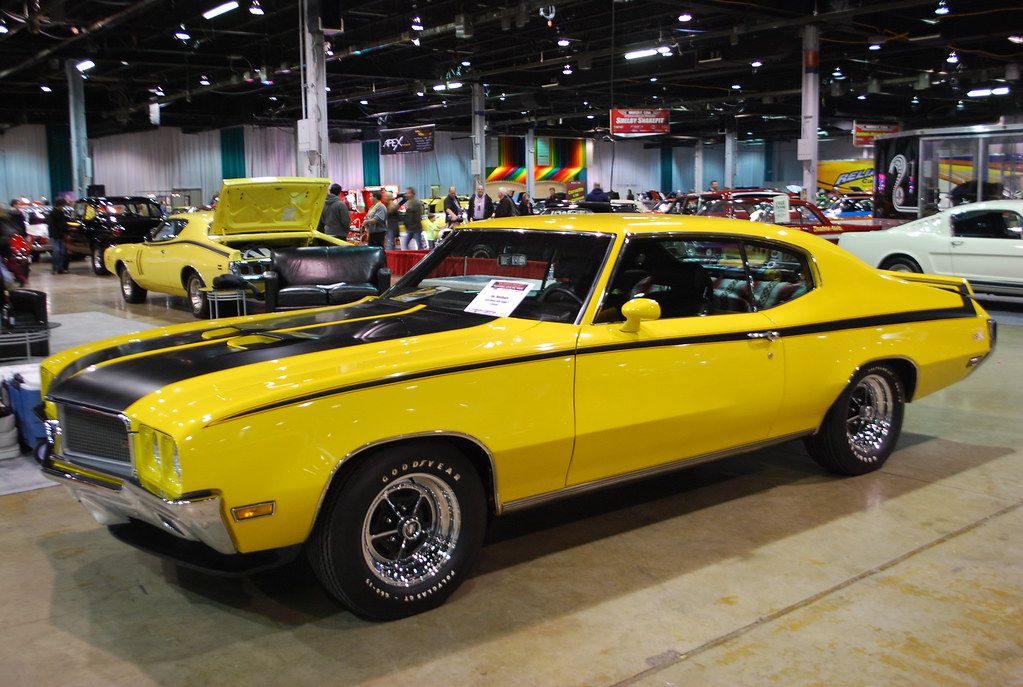
4. **1970 Buick GSX Stage 1**The 1970 Buick GSX Stage 1 decisively shattered the perception of Buick as only building “gentleman’s cars,” instead delivering one of the most savagely powerful muscle cars of the era. What made the GSX particularly excessive was its ability to cloak ferocious performance beneath Buick’s traditionally upscale image, a true wolf in more genteel clothing. This blend of luxury and unadulterated brute force was revolutionary and unique for its time.
At its heart lay the Stage 1 version of Buick’s formidable 455 cubic-inch V8. Officially rated at a conservative 360 horsepower, it produced an earth-moving 510 lb-ft of torque, the highest torque rating of any American production car for decades. Like many contemporaries, actual output was closer to 400 horsepower. This immense torque, delivered at just 2,800 RPM, created neck-snapping acceleration from virtually any speed. Road tests recorded 0-60 mph in about 5.5 seconds and quarter-mile times in the high 13-second range, remarkable for a car weighing over 3,800 pounds.
Despite a heavy-duty suspension and power front disc brakes, these upgrades were insufficient to manage the engine’s prodigious torque. The suspension, while firmer, was still comfort-tuned, allowing the rear wheels to break loose easily, even at highway speeds. Its additional luxury weight combined with soft suspension created a dangerous mix of massive power in a chassis prone to wallowing during aggressive maneuvers. Primitive tires were hopelessly inadequate, leading to constant traction issues. Period tests warned the GSX demanded a delicate throttle touch to prevent unpredictable rear-end steps, underscoring its untamed nature. With only 678 total GSX models produced, this Buick remains a rare and excessively powerful piece of muscle car history.
Read more about: Legends Lost: Revisiting the Classic American Cars of the ’50s and ’60s That Defined an Era and Vanished

5. **1969 Pontiac GTO Judge Ram Air IV**The 1969 Pontiac GTO Judge with the Ram Air IV engine option stood as one of the most excessive and track-focused muscle cars ever thinly disguised for public roads. While the standard GTO pioneered the muscle car segment, the Judge Ram Air IV pushed performance into territory questionable for inexperienced drivers. It embodied an uncompromising approach to power that prioritized raw capability over everyday practicality.
At its core, the Ram Air IV 400 cubic-inch V8 was essentially a thoroughbred race engine, barely detuned for street legality. It featured high-flow cylinder heads, an aggressive high-lift camshaft, and a four-barrel Quadrajet carburetor fed by elaborate cold-air induction through twin hood scoops. Officially rated at 370 horsepower, its actual output was widely acknowledged to exceed 400 horsepower and 445 lb-ft of torque. This uncompromising powertrain delivered explosive power, but only once the tachometer soared past 3,500 RPM.
This high-strung nature made it challenging for street use. The aggressive camshaft created a rough idle and poor low-end torque, making normal driving sluggish. However, at higher RPMs, it delivered a violent surge that easily overwhelmed the car’s handling and period bias-ply tires. Road tests reported 0-60 mph in 5.7 seconds and low 14-second quarter-miles, often underselling its potential due to wheelspin. Motor Trend famously noted it was “not for the timid or inexperienced,” highlighting its hairy handling. Despite suspension upgrades, they were inadequate for its power, especially with its front-heavy weight. Only 239 Ram Air IV Judges were built, making it a rare and scarily potent piece of muscle car history.
Car Model Information: 2017 Maserati Levante S
Name: Pontiac GTO
Caption: 2005 Pontiac GTO
Manufacturer: Pontiac (automobile),Holden
Class: Mid-size car,Compact car,Mid-size car
Production: 1963–1974,2003–2006
Predecessor: Pontiac Tempest
Layout: Front-engine, rear-wheel-drive layout
ModelYears: 1964-1974 2004-2006
Categories: 1970s cars, 2000s cars, All articles with unsourced statements, Articles with short description, Articles with unsourced statements from October 2008
Summary: The Pontiac GTO is a front-engine, rear-drive, two-door, and four-passenger automobile manufactured and marketed by the Pontiac division of General Motors over four generations from 1963 until 1974 in the United States — with a fifth generation made by GM’s Australian subsidiary, Holden, for the 2004 through 2006 model years.
The first generation of the GTO is credited with popularizing the muscle car market segment in the 1960s. Some consider the Pontiac GTO to have started the trend with all four domestic automakers offering a variety of competing models.
For the 1964 and 1965 model years, the GTO was an optional package on the intermediate-sized Pontiac LeMans. The 1964 GTO vehicle identification number (VIN) started with 22, while the 1965 GTO VIN began with 237. The GTO was designated as a separate Pontiac model from 1966 through 1971 (VIN 242…). It became an optional package again for the 1972 and 1973 intermediate LeMans. For 1974, the GTO was an optional trim package on the compact-sized Ventura.
The GTO model was revived for the 2004 through 2006 model years as a captive import for Pontiac, a left-hand drive version of the Holden Monaro, itself a coupé variant of the Holden Commodore.
Get more information about: Pontiac GTO
Buying a high-performing used car >>>
Brand: Pontiac Model: GTO Judge
Price: $20,995 Mileage: 62,696 mi.
Read more about: Engineer’s Nightmare: 14 Classic Models That Define Automotive Repair Challenges in 2025
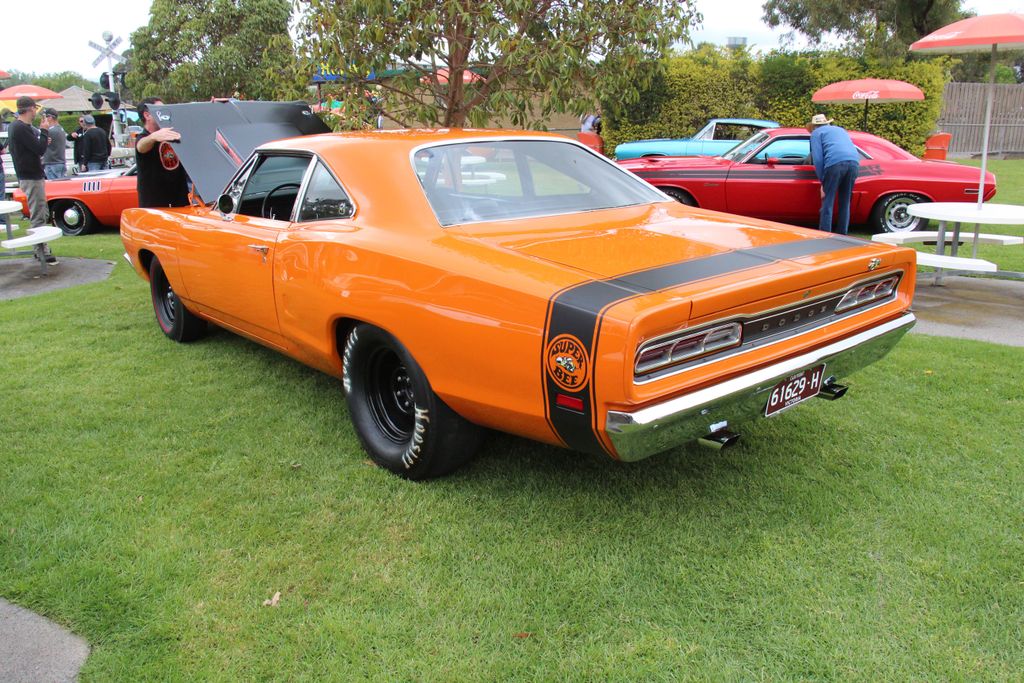
6. **1969 Dodge Coronet Super Bee A12**The 1969 Dodge Coronet Super Bee A12, often affectionately dubbed the “Six Pack” Super Bee, stands out as one of the most unapologetically excessive muscle cars ever unleashed upon public roads. This vehicle was so intensely focused on straight-line performance that its sale as a street-legal automobile bordered on outright irresponsibility. The A12 package essentially transformed the already potent Super Bee into a specialized drag strip machine, complete with the necessary accoutrements and raw power, thinly disguised for public consumption.
At the very core of this formidable beast was a 440 cubic-inch V8 engine, famously equipped with the “Six Pack” induction system. This innovative setup featured three Holley two-barrel carburetors, masterfully mounted on an Edelbrock aluminum intake manifold. While officially rated at a robust 390 horsepower and 490 lb-ft of torque, these figures, typical of the era’s muscle cars, were deliberately conservative, with actual output estimated closer to a staggering 450 horsepower. The sheer, massive torque was available almost instantaneously in the rev range, bestowing upon the car an uncanny ability to break traction at virtually any speed, a true testament to its untamed nature.
What truly amplified the A12 Super Bee’s inherent danger was Dodge’s unwavering, uncompromising focus on straight-line acceleration, often at the expense of nearly every other performance characteristic. The package incorporated features like a lightweight fiberglass lift-off hood, secured with metal pins rather than conventional hinges, a stout 4.10:1 Dana 60 rear axle with a Sure Grip limited-slip differential, and heavy-duty suspension components. Alarmingly, front disc brakes were conspicuously absent; the car came standard with drum brakes on all four corners, a safety compromise that, when viewed against its performance potential, seems almost unconscionable. This formidable combination delivered staggering performance for its era, boasting 0-60 mph times of approximately 5.3 seconds and quarter-mile times consistently in the high 12-second range, straight from the factory floor.
Contemporary road tests of the period universally reported that the car was virtually undrivable in wet conditions, a direct consequence of its overwhelming power combined with the utterly inadequate tire technology of the time. The heavy-duty suspension, while an improvement over standard Coronets, remained primarily tuned for straight-line acceleration rather than dynamic handling, creating a vehicle that could be dangerously unpredictable in corners, especially when the throttle was enthusiastically applied. The A12’s true distinction from its contemporaries was its unrefined, almost brutal character. Its triple carburetors demanded meticulous adjustment and maintenance, the aggressive camshaft produced a loping, unstable idle, and the car suffered from poor throttle modulation—it was either “on” or “off” with little in-between, rendering smooth driving nearly impossible. With only 1,907 A12 package Super Bees ever produced, this Mopar muscle car stands as one of the most extreme examples of Detroit’s unwavering commitment to raw performance over the more mundane considerations of safety or everyday drivability.
Car Model Information: 2017 Maserati Levante S
Name: Dodge Super Bee
Manufacturer: Chrysler Corporation
Production: 1968–1971 , 1970–1980 (Mexico only) , 2007–2009 , 2012–2013
Layout: FR layout
Class: Muscle car
Caption: 1969 Dodge Coronet Super Bee A12 “Six Pack”
Categories: 1960s cars, 1970s cars, All articles needing additional references, All articles with dead external links, All articles with unsourced statements
Summary: The Dodge Super Bee is a mid-sized muscle car marketed by Dodge, that was produced for the 1968 through 1971 model years.
In Mexico, the Super Bee was based on a compact-sized Chrysler platform and marketed from 1970 until 1980.
The Super Bee model name was resurrected for the 2007, 2008, 2009, 2012, and 2013 Dodge Charger Super Bee models.
Get more information about: Dodge Super Bee
Buying a high-performing used car >>>
Brand: Dodge Model: Coronet Super Bee
Price: $20,995 Mileage: 62,696 mi.
Read more about: From Anemic to Awkward: Unmasking 15 Muscle Cars That Truly Missed the Mark – And Why We Can’t Forget Them
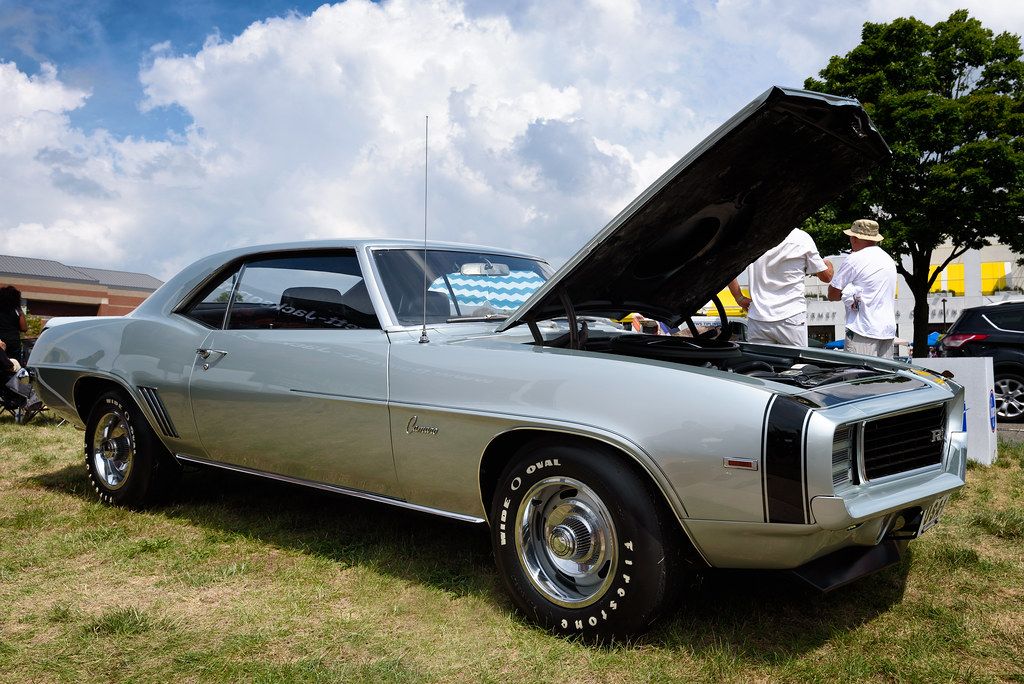
7. **1969 Chevrolet Camaro ZL1**The 1969 Chevrolet Camaro ZL1 represents perhaps the pinnacle of excessive factory hot rods ever so thinly disguised as a production vehicle. This car was so remarkably specialized and overtly overpowered that it barely managed to qualify as street-legal. Conceived primarily for dominating drag strips through Chevrolet’s exclusive Central Office Production Order (COPO) system, the ZL1 deftly bypassed typical production constraints, delivering what was essentially a purpose-built track weapon, complete with license plates and registration.
At the very heart of this formidable machine was the legendary all-aluminum 427 cubic-inch ZL1 engine, an engineering masterpiece that was, in essence, a detuned version of the L88 racing engine, famously employed in Corvettes at Le Mans. This marvel of engineering boasted aluminum cylinder heads and blocks—an almost unheard-of feature in production cars of that era—along with a heavy-duty forged rotating assembly, a high-performance solid-lifter camshaft, and an impressive 12.5:1 compression ratio. While officially rated at a laughably conservative 430 horsepower, its actual output was widely understood to exceed a mind-bending 500 horsepower and 500 lb-ft of torque, establishing it as a true powerhouse.
What unequivocally rendered the ZL1 Camaro particularly ill-suited for conventional street use wasn’t merely its raw, prodigious power, but its utterly uncompromising nature. The high-compression engine necessitated premium fuel, had a tendency to run excessively hot in urban traffic, delivered abysmal fuel economy, and was characterized by a loping, unstable idle that transformed routine driving into a continuous exercise in concentration. Its powerband was distinctly peaky and explosively potent, offering relatively little grunt down low but unleashing a violent, almost terrifying rush of acceleration once the engine ascended into its higher RPMs, making for a truly exhilarating, yet challenging, experience.
Despite its undeniable racing pedigree, the ZL1 received surprisingly minimal chassis upgrades compared to standard Camaros. While the suspension package, designated F41 heavy-duty springs and shocks, represented the best Chevrolet had to offer, it remained fundamentally inadequate for effectively controlling the car’s colossal power, especially when contending with the tire technology of that specific era. The standard 14-inch wheels, shod with relatively narrow bias-ply tires, were hopelessly overmatched by the engine’s output, leading to persistent traction issues even under optimal driving conditions. Contemporary road tests meticulously recorded quarter-mile times in the low 13-second range, with speeds approaching 110 mph—impressive figures that often undersold the car’s true potential, as most testers frequently grappled with severe traction limitations. Even more telling were the widespread comments regarding the car’s street manners: “virtually undrivable in wet conditions” and “requires constant attention” were common observations, emphatically highlighting just how ill-suited this thinly disguised race car was for public roads.
The ZL1’s truly extreme nature was starkly reflected in its price tag; the engine option alone commanded an additional $4,160, nearly tripling the base Camaro’s $2,700 price. This astronomical figure inherently meant that only a mere 69 examples were ever constructed, solidifying its status as one of the rarest and most immensely valuable muscle cars ever produced. The ZL1 Camaro stands as arguably the most extreme embodiment of Detroit’s willingness to unleash thinly disguised race cars into the hands of the general public during the fervent zenith of the original muscle car era.
Car Model Information: 2018 Chevrolet Camaro 1LS
Name: Chevrolet Camaro
Manufacturer: Chevrolet
Production: 1966–2002,2009–2023
ModelYears: 1967–2002,2010–2024
Class: Pony car
BodyStyle: coupe,convertible
Platform: GM F platform,GM Zeta platform,GM Alpha platform
Layout: Front-engine, rear-wheel-drive layout
Categories: 1970s cars, 1980s cars, 1990s cars, 2+2 coupés, 2000s cars
Summary: The Chevrolet Camaro is a mid-size American automobile manufactured by Chevrolet, classified as a pony car. It first went on sale on September 29, 1966, for the 1967 model year and was designed to compete with the Ford Mustang. The Camaro shared its platform and major components with the Firebird, produced by General Motors’ Pontiac division that was also introduced for the 1967 model year.
Four distinct generations of the Camaro were developed before production ended in 2002. The nameplate was revived on a concept car that evolved into the fifth-generation Camaro; production started on March 16, 2009.
Production of the sixth generation of the Camaro ended in December 2023, for the 2024 model year.
Get more information about: Chevrolet Camaro
Buying a high-performing used car >>>
Brand: Chevrolet Model: Camaro
Price: $18,785 Mileage: 69,196 mi.
Read more about: Unveiling American Automotive Excellence: A Deep Dive into Chevrolet’s 12 Most Legendary Models of All Time

8. **1971 Plymouth Hemi ‘Cuda**The 1971 Plymouth Hemi ‘Cuda represents one of the final and most striking examples of unrestrained muscle car excess, emerging just before stringent emissions regulations and the looming oil crisis brought an abrupt end to the first golden era of these powerful machines. As one of the very last vehicles to proudly feature Chrysler’s legendary 426 Hemi engine before its discontinuation, the ’71 Hemi ‘Cuda was, in essence, a street-legal drag racer, engineered with minimal concessions to the practicalities of everyday drivability or the imperative of safety.
At its fearsome core resided the mighty 426 Hemi V8, an engineering marvel characterized by its distinctive hemispherical combustion chambers, twin four-barrel carburetors, and a robust forged crankshaft. Officially rated at a formidable 425 horsepower and 490 lb-ft of torque, its true output was widely acknowledged to considerably exceed 500 horsepower in its stock configuration. This colossal power figure proved particularly problematic when shoehorned into the ‘Cuda’s relatively lightweight E-body platform, creating a dangerously imbalanced power-to-weight ratio that very few drivers could hope to manage safely or effectively, underscoring its untamed spirit.
What rendered the ’71 Hemi ‘Cuda particularly ill-suited for conventional street use was its uncompromising and singular focus on straight-line performance, frequently at the considerable expense of nearly every other driving characteristic. The Hemi engine itself was notoriously temperamental, demanding meticulous tuning and constant maintenance of its dual carburetors to perform optimally. It delivered abysmal fuel economy, often registering in the single digits, and had a propensity to run excessively hot in traffic. Furthermore, it generated such an immense amount of torque that even the most minor throttle inputs could readily break the rear wheels loose, making smooth, controlled driving an almost impossible endeavor.
The ‘Cuda’s handling characteristics were equally problematic, contributing significantly to its challenging nature. Despite the availability of an aggressive “Shaker” hood and overtly aggressive styling that hinted at serious sporting pretensions, the chassis was fundamentally ill-equipped to effectively manage the Hemi’s overwhelming power. Its torsion bar front suspension and traditional leaf spring rear setup, while adequate for launching the car in a straight line, created a sensation of unpredictable handling during cornering, especially when power was aggressively applied. Contemporary road tests frequently noted significant body roll, a tendency towards pronounced understeer, and an unnerving propensity for the rear end to break loose without warning, creating a truly exhilarating yet hazardous driving experience.
Perhaps most tellingly, insurance companies had, by this point, begun to specifically target Hemi-powered cars with exorbitant premiums, recognizing the extreme risk they inherently represented on public roads. These prohibitive premiums often eclipsed the monthly payment for the car itself, effectively pricing the Hemi ‘Cuda out of reach for many prospective buyers and consequently contributing to its extreme rarity—only 108 hardtops and a mere 11 convertibles were ever built with the Hemi engine in 1971. Road tests from that era were remarkably candid about the car’s nature, with one notable publication suggesting the Hemi ‘Cuda demanded “the skills of a test pilot” to be driven safely at its limits, while another magazine succinctly described it as “almost too much car for the street.” These weren’t exaggerations; the potent combination of massive power, insufficient chassis development, primitive tire technology, and minimal safety features conspired to create one of the most dangerously potent production cars ever sold to the American public.
Car Model Information: 2017 Maserati Levante S
Caption: 1970 Hardtop Coupe
Name: Plymouth Barracuda
Manufacturer: Plymouth (automobile)
Production: 1964–1974
Assembly: Fenton, Missouri,Hamtramck, Michigan,Maywood, California,Windsor, Ontario
Layout: Front-engine, rear-wheel drive layout
Class: Pony car
Categories: 1970s cars, All articles with dead external links, All articles with unsourced statements, Articles with dead external links from February 2018, Articles with dead external links from January 2022
Summary: The Plymouth Barracuda is a two-door pony car that was manufactured by Chrysler Corporation from 1964 through 1974 model years.
The first-generation Barracuda was based on the Chrysler A-body and was offered from 1964 until 1966. A two-door hardtop (no B-pillar) fastback design, it shared a great majority of parts and bodywork with the Plymouth Valiant, except for the distinctive wraparound rear glass.
The second-generation Barracuda, though still Valiant-based, was heavily redesigned. Built from 1967 through 1969, it was available as a two-door in fastback, notchback, and convertible versions.
The third generation, offered from 1970 until 1974, was based on the Chrysler E-body, exclusive to it, and the slightly larger Dodge Challenger. A completely new design, the two-door Barracuda was available in hardtop and convertible body styles.
Get more information about: Plymouth Barracuda
Buying a high-performing used car >>>
Brand: Plymouth Model: Hemi ‘Cuda
Price: $20,995 Mileage: 62,696 mi.
Read more about: Engineer’s Nightmare: 14 Classic Models That Define Automotive Repair Challenges in 2025
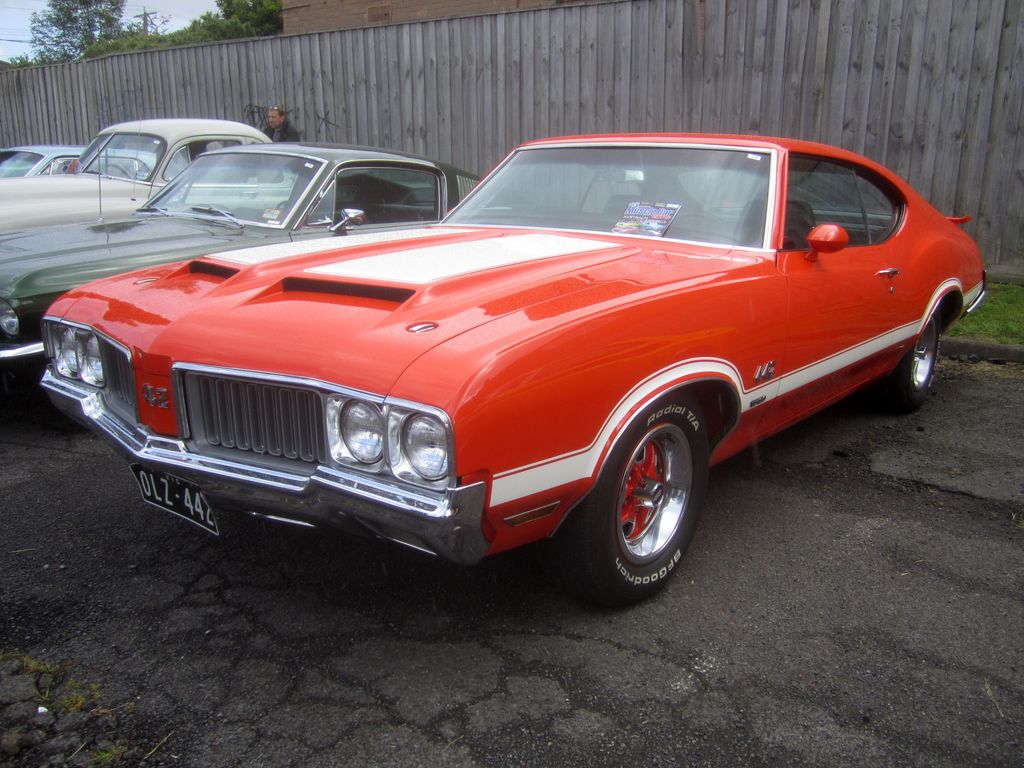
9. **1970 Oldsmobile 442 W-30**The 1970 Oldsmobile 442 W-30 emphatically shattered the brand’s relatively conservative image, instead delivering one of the most excessively powerful muscle cars of the era. What made this particular model intriguing was its deceptively mature-looking package, which skillfully belied its brutal capabilities. It presented a potent, almost contradictory, combination of sophistication and raw, unadulterated performance that boldly pushed the very boundaries of what was then considered safe and prudent for the streets, a true wolf cloaked in a gentleman’s attire.
At its very heart was Oldsmobile’s magnificent 455 cubic-inch V8, but for the W-30 designation, this engine received truly significant upgrades that transformed it into a powerhouse. These enhancements included a specially designed camshaft featuring higher lift and duration, meticulously redesigned cylinder heads, a lightweight aluminum intake manifold, and a formidable forced-air induction system, often channeled through functional scoops strategically placed in the fiberglass hood. While officially rated at a rather conservative 370 horsepower (when paired with the automatic transmission) or 360 horsepower (with the manual), its true output was widely believed to significantly exceed 400 horsepower, complemented by an astonishing 500 lb-ft of torque, making it a torque monster of unparalleled ferocity.
What rendered the W-30 particularly excessive and undeniably exhilarating was this incredible torrent of torque, delivered prodigiously from remarkably low RPMs, effectively transforming the car into an absolute pavement shredder. It possessed the ability to rocket from 0-60 mph in the low 6-second range and devour the quarter-mile in the low 14s, impressive figures that often undersold its true real-world capability due to the inherent difficulty of obtaining consistent traction from its period-specific bias-ply tires. The sheer, overwhelming abundance of power was such that even highly skilled drivers often found themselves struggling to prevent the rear wheels from spinning uncontrollably under any semblance of hard acceleration.
Despite the inclusion of a heavy-duty suspension, wider tires, and optional power disc brakes, these components, while improvements, were frequently and comprehensively overwhelmed by the engine’s immense and relentless power. The car’s relatively soft suspension tuning, a characteristic hallmark of Oldsmobile’s commitment to comfort, meant that while it was undoubtedly a comfortable ride, it also exhibited considerable body roll and an unnerving tendency for the rear end to break loose suddenly under load. This unsettling dynamic transformed aggressive cornering into a genuinely dangerous proposition, creating a stark and often precarious contrast with its undeniable straight-line prowess.
The 442 W-30 represented Oldsmobile’s bold, if somewhat reckless, plunge headfirst into the fervent horsepower wars of the era. It masterfully offered a unique blend of luxury and blistering performance in a package that was, by all accounts, almost too powerful for its own good, effectively putting a sophisticated but brutally potent machine into the hands of the general public. Its inherent rarity—with only 3,100 W-30 coupes and convertibles produced in 1970—serves to underscore its special status as an over-the-top muscle car that was undeniably ahead of its time in terms of raw output, yet perhaps somewhat behind in the critical area of chassis refinement.
Read more about: Timeless Engineering, Iconic Style: Unpacking the Most Significant Cars of the 1940s
As we reflect on these incredible machines, it becomes clear that the muscle car era wasn’t just about raw power; it was a testament to automotive ambition pushing the limits of engineering. These aren’t just old cars; they are legends, each a potent reminder of a time when manufacturers dared to put barely-tamed beasts on public roads, creating an unforgettable chapter in automotive history. While their sheer power and lack of refinement might have made them challenging, even dangerous, for their contemporary drivers, it is precisely these characteristics that now cement their status as misunderstood icons, forever celebrated for their audacious spirit and groundbreaking, albeit often unmanageable, performance.

